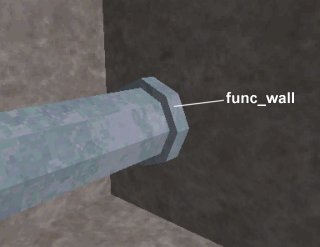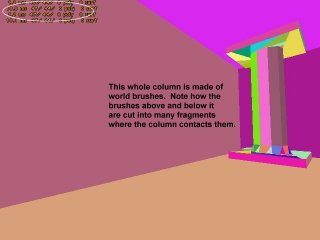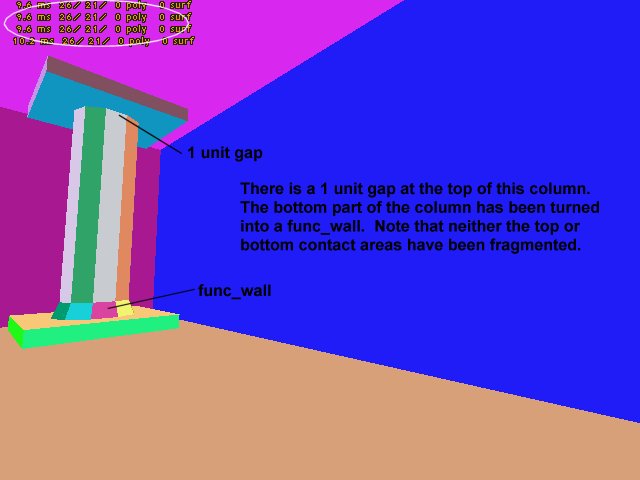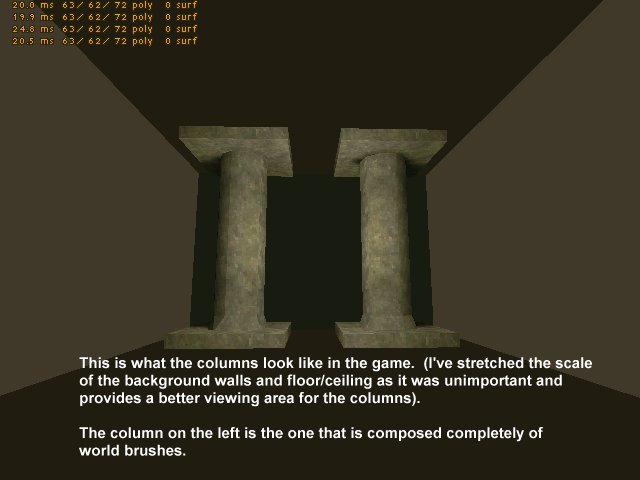VERC: Polygon Reduction Methods Last edited 2 years ago2022-09-29 07:55:19 UTC
Polygon Reduction Methods: A quick and dirty guide.
This article originally started out as an email to someone, but it kept going on and on and on. So, here it is. I'm not claiming this is a complete guide to low polygon counts, but its some quick advice that's good to know.There are a number of things to keep in mind concerning r_speeds / polygon count.
Entity brushes will not break up other solid brushes, world brushes will. That is, if you have a 10 sided cylinder that makes contact with a flat brush, that flat brush will be broken into many pieces (polygons). This can affect both how the brush looks and how many polygons are required to be drawn. There are two main ways to work around this problem:
- Where one object meets another, leave a 1 (or more) unit gap. This is best done when the player can't see the area where the gap is (i.e.: at the top of a pillar, or under some shallow water.)
- Where one object meets another, leave a small gap and join the two objects with a func_wall. For example, if you've got a set of pipes that meet up with a wall, put a pipe flange on the wall and connect the pipe to that. Make the flange a func_wall.
Another thing to keep in mind is texture scale. If you change the scale of the the texture to X*2 and Y*2, the wall will be split into half as many polygons (and so on, and so on). The scale of a texture can have a big effect on the the number of polygons. Whenever possible, when it wont be visually negative, increase the scale of a texture (this isn't that often, mind you, but for outdoor areas or areas the player can't see, it can be handy). You'll notice in the included pictures that the walls and ceiling/floor are single polygons. What I've done is stretched them to X*300 Y*300 scale. In the in-game shot, you'll see that this produces a flat shaded texture. The only time you would do this in a real map would the stretched texture wouldn't be visible. Current versions of Zoner's compile tools set the maximum X and Y scale at 316.1 times the normal scale.
Last, remember that the game engine isn't as smart as you. Or maybe its a whole lot smarter. It can see through doors (and any other brush entity), and can see somewhat around corners. Make sure you have world brushes sufficiently blocking sight into other areas, otherwise the engine will be drawing those areas too.
- Article Credits
- Chris 'autolycus' Bokitch – Author
This article was originally published on Valve Editing Resource Collective (VERC).
The original URL of the article was http://collective.valve-erc.com/index.php?doc=1015277164-65861900.
The archived page is available here.
TWHL only publishes archived articles from defunct websites, or with permission.
For more information on TWHL's archiving efforts, please visit the
TWHL Archiving Project page.
Comments
You must log in to post a comment. You can login or register a new account.




